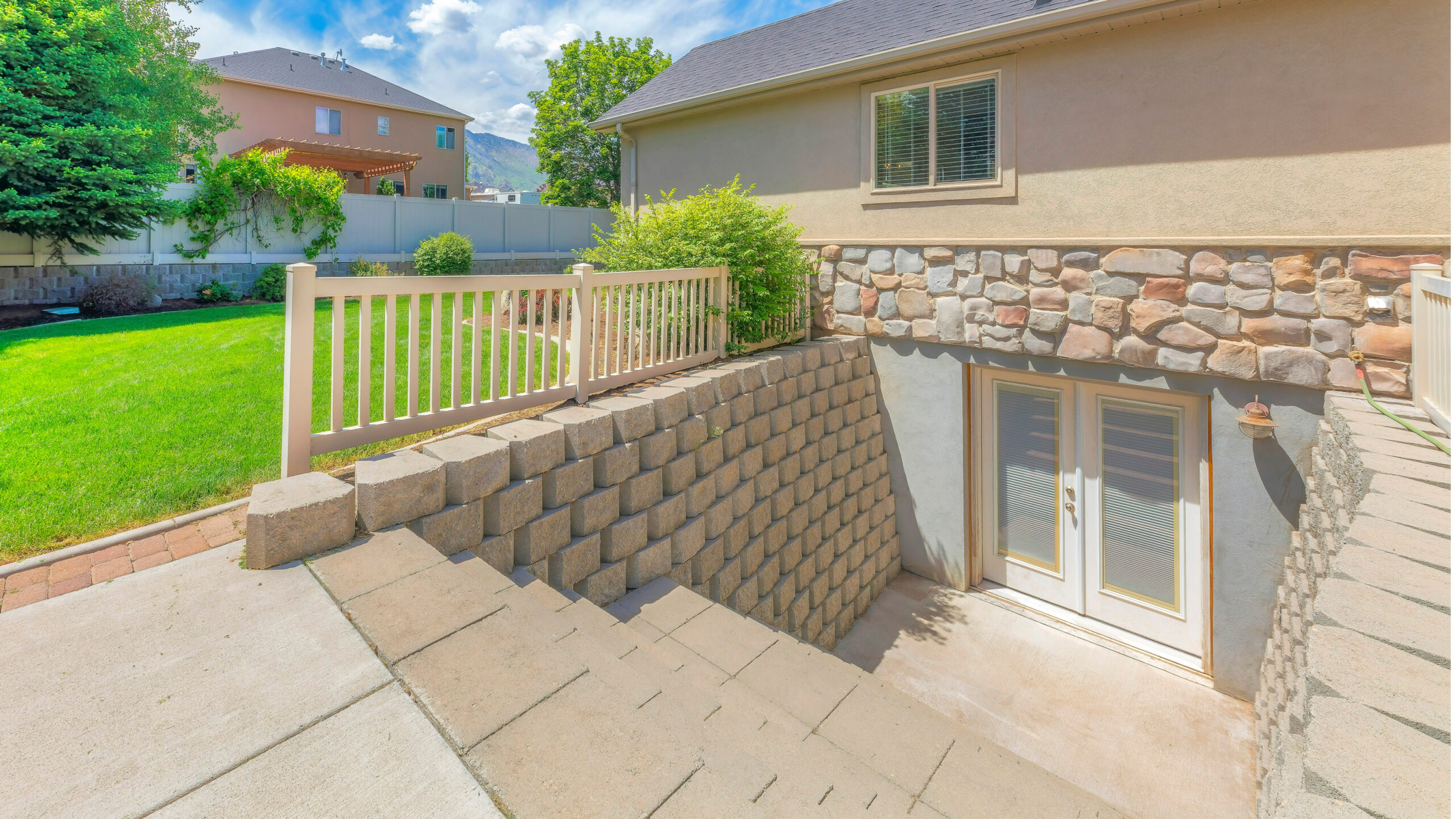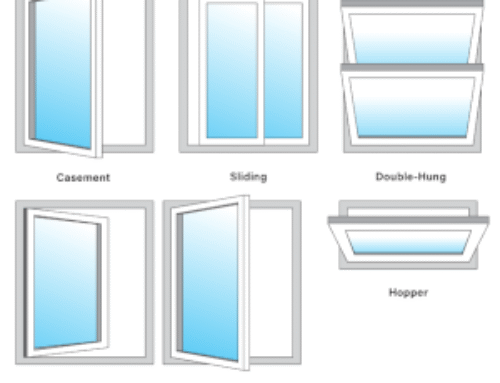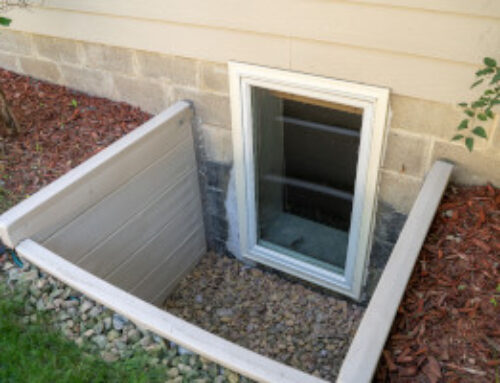If you’re finishing your basement or simply trying to make it safer and more functional, you’ve probably come across the idea of egress doors.
These aren’t just any doors—they provide a safe exit in case of emergency, bring in natural light, and help your home meet building code requirements.
But one of the first questions most homeowners ask is: How much does an egress door cost?
Let’s break down the numbers, what affects them, and why an egress door might be one of the smartest upgrades you can make for your home.
Average Cost of Egress Doors

Installing an egress door is a significant project, and costs vary depending on the type of door and the complexity of the installation.
Here’s a general breakdown:
- Basic egress door installation: $2,500 – $5,000
Typically, a standard steel door with minimal excavation or framing changes.
- Mid-range egress doors with custom framing: $5,000 – $8,000
Often, fiberglass or French doors with additional finishing work.
- High-end or custom egress systems: $8,000 – $15,000+
Large sliding glass doors, double doors, or heavily customized walkouts.
For example, a single steel door with simple framing may cost much less than a glass-paneled double door that requires digging an exterior stairwell and installing a drainage system.
The style, material, and structural modifications all play a major role in the final price.
Factors That Influence Egress Door Costs
Type of Door
The material and style of the door make a big difference. A basic steel door is typically the most affordable and offers durability, while fiberglass doors cost more but provide better insulation and a wider variety of finishes.
If you want a sliding glass door or French doors, expect to pay significantly more, since these doors require larger openings and more structural support.
The aesthetics you choose directly affect the overall price.
Size of Opening
If your basement already has an existing opening that just needs to be enlarged, the cost will be lower. However, cutting a brand-new opening through a concrete foundation wall requires specialized equipment, engineering, and reinforcement.
The larger the opening, the more expensive the job will be.
Labor & Excavation
Many egress door installations involve digging a stairwell or walkout path to reach the door from outside.
This can include building retaining walls, installing proper steps, and sometimes adding a drainage system to prevent water buildup.
Labor-intensive excavation is one of the biggest cost drivers, and properties with tricky soil, slopes, or limited access may require more time and machinery.
Permits & Code Compliance
Because egress doors are tied to life-safety codes, you’ll almost always need permits and inspections.
Permit fees vary depending on your location, but more importantly, professional installers must ensure that the door meets all IRC (International Residential Code) standards for size, accessibility, and proper exit.
This compliance work adds both time and cost, but it’s non-negotiable if you want a safe, legal installation.
Finishes & Hardware
The cost doesn’t stop at the door itself. Upgrades like decorative trim, insulated glass panels, high-security locks, weatherstripping, and interior finishing work can all increase the price.
If you want your egress door to match the style of the rest of your home or serve as a beautiful secondary entrance, the finishing touches may represent a noticeable portion of your budget.
Cost of Egress Doors vs. Egress Windows
When deciding between an egress door and an egress window, most homeowners want to know the difference in price and functionality. While both provide safe exits and meet code requirements, their installation costs and benefits aren’t the same.
Egress Windows
Installing an egress window costs $4,000 – $10,000, depending on the size of the opening, the type of window chosen, and whether excavation for a window well is needed.
Egress Doors
Egress doors are larger and more complex to install, with costs ranging from $8,000 – $15,000+. Because doors create a full entryway, they usually involve more labor, finishing, and code compliance steps than windows.
Why You Should Choose a Window
- More budget-friendly option
- Ideal for bedrooms and smaller basement rooms
- Meets safety codes while letting in natural light and fresh air
- Less disruptive to your foundation wall
Why You Should Choose a Door
- Best for walkout basements or basements with enough exterior clearance
- Provides easy access to the outdoors—great for moving furniture, gardening access, or even creating a rental unit
- Lets in much more natural light and airflow
- Adds significant property value by turning the basement into a more functional, livable space
Long-Term Value of Installing an Egress Door
While the upfront cost may feel significant, an egress door is more than an expense, it’s an investment. Here’s why:
Safety & Code Compliance
An egress door ensures that your basement meets modern building codes, especially if you plan to use the space as a bedroom, office, or rental unit. More importantly, it provides a quick, accessible escape route during emergencies, such as a fire or flood. That peace of mind alone is invaluable for families.
Increased Property Value
A basement with a proper egress door is considered habitable living space in most housing markets. That means square footage can be counted toward the total livable area of your home, which directly increases resale value.
Potential buyers also see egress doors as a premium feature, especially if they want to use the basement for a guest suite, rental apartment, or recreational space.
Convenience and Functionality
Beyond safety, an egress door adds everyday convenience. Homeowners can move large items—like furniture, appliances, or storage bins—in and out of the basement without struggling up narrow staircases.
It also makes the basement feel more connected to the outdoors, with natural light and ventilation that improve the overall comfort of the space.
Better Options for Rental Income
If you’re considering turning your basement into a rental unit or Airbnb, an egress door is often required by law. It gives tenants their own private entryway, which can make your property more attractive and command higher rental income.
Modern Designs
Unlike older designs, today’s egress systems balance durability with style, meaning you can choose from attractive finishes that enhance curb appeal.
Frequently Asked Questions
The Upgrade Your Basement Needs
Egress doors may cost more than egress windows, but they provide greater accessibility, natural light, and long-term benefits for your home. Beyond meeting code, they transform your basement into a safer, brighter, and more valuable living space.
If you’re considering an egress door for your basement, don’t just look at the price tag—think about the safety, functionality, and property value it brings.
Contact Bluegrass Foundation Repair today for a professional inspection and a customized cost estimate to get started.



